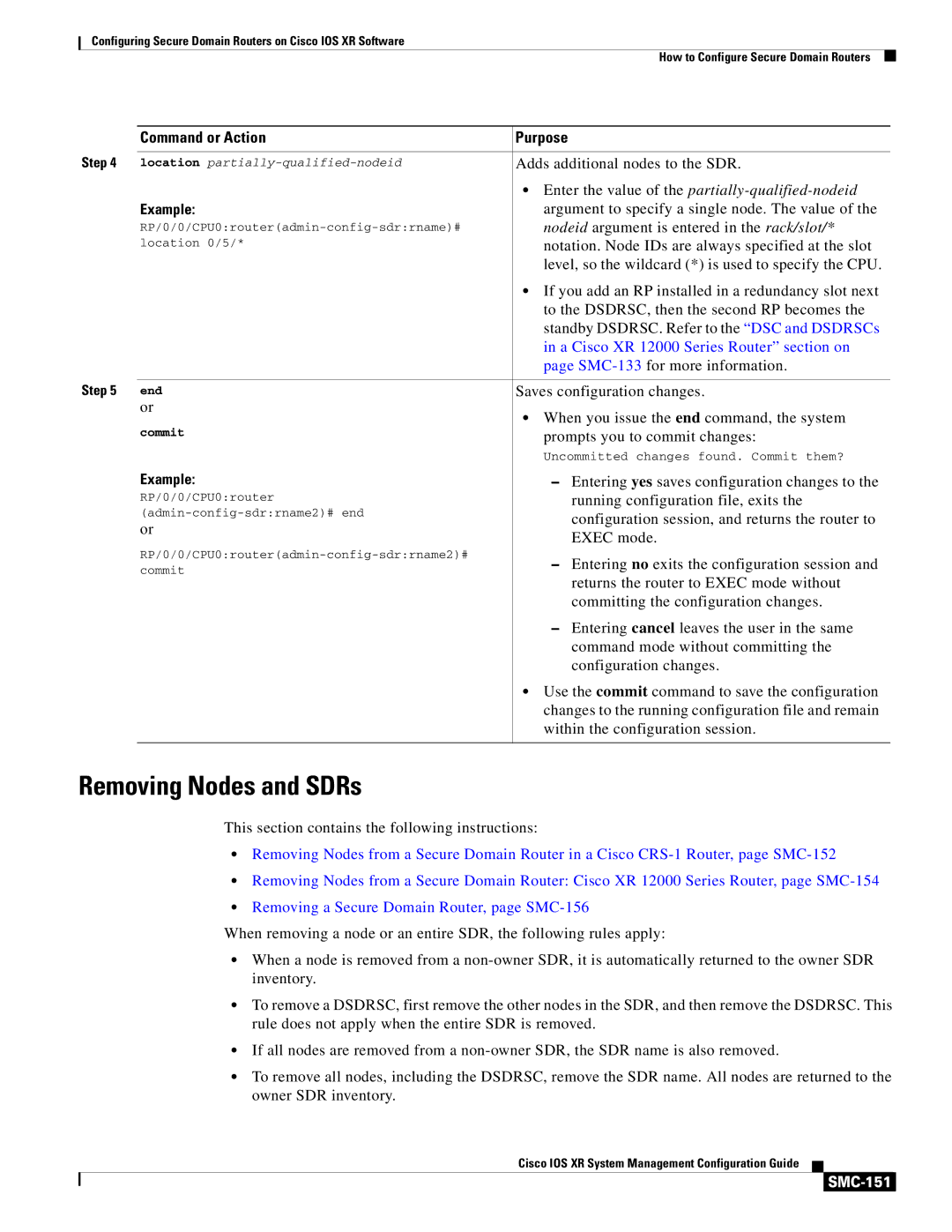
Configuring Secure Domain Routers on Cisco IOS XR Software
How to Configure Secure Domain Routers
| Command or Action | Purpose |
Step 4 |
|
|
location | Adds additional nodes to the SDR. | |
|
| • Enter the value of the |
| Example: | argument to specify a single node. The value of the |
| nodeid argument is entered in the rack/slot/* | |
| location 0/5/* | notation. Node IDs are always specified at the slot |
|
| level, so the wildcard (*) is used to specify the CPU. |
|
| • If you add an RP installed in a redundancy slot next |
|
| to the DSDRSC, then the second RP becomes the |
|
| standby DSDRSC. Refer to the “DSC and DSDRSCs |
|
| in a Cisco XR 12000 Series Router” section on |
|
| page |
Step 5 |
|
|
end | Saves configuration changes. | |
| or | • When you issue the end command, the system |
|
| |
| commit | prompts you to commit changes: |
|
| Uncommitted changes found. Commit them? |
| Example: | – Entering yes saves configuration changes to the |
| RP/0/0/CPU0:router | running configuration file, exits the |
| configuration session, and returns the router to | |
| or | |
| EXEC mode. | |
|
| |
| – Entering no exits the configuration session and | |
| commit | |
| returns the router to EXEC mode without | |
|
| |
|
| committing the configuration changes. |
|
| – Entering cancel leaves the user in the same |
|
| command mode without committing the |
|
| configuration changes. |
|
| • Use the commit command to save the configuration |
|
| changes to the running configuration file and remain |
|
| within the configuration session. |
|
|
|
Removing Nodes and SDRs
This section contains the following instructions:
•Removing Nodes from a Secure Domain Router in a Cisco
•Removing Nodes from a Secure Domain Router: Cisco XR 12000 Series Router, page
•Removing a Secure Domain Router, page
When removing a node or an entire SDR, the following rules apply:
•When a node is removed from a
•To remove a DSDRSC, first remove the other nodes in the SDR, and then remove the DSDRSC. This rule does not apply when the entire SDR is removed.
•If all nodes are removed from a
•To remove all nodes, including the DSDRSC, remove the SDR name. All nodes are returned to the owner SDR inventory.
Cisco IOS XR System Management Configuration Guide
